80 F. maximum temperature yesterday in the Twin Cities.
83 F. average MSP metro high on June 30.
79 F. high on June 30, 2016.
July 1, 1964: Tyler picks up over 6 inches of rain in 24 hours.

Enjoy Our Comfortable Front - Heat Wave Brewing
Let's be honest: a warmer climate sounds pretty good - in February. But as temperatures continue to rise summer heat may become more prevalent, intense and debilitating for much of the USA.
America's 45 largest cities experienced an average of 1,360 summer heat deaths from 1975 to 2010. Based on the rate of warming, The National Resources Defense Council predicts the annual death toll from severe heat may rise to 13,860 by the mid-2040s. More details here.
To be clear, climate change doesn't trigger heat waves or floods. It just make them worse, it turns up the dial.
The reason I'm leading with heat is because we'll see 90s late next week, again the following week. In fact models are suggesting a chance of 100-degree heat across parts of the Upper Midwest roughly July 12-15. Circle your calendar. And make a date with your favorite lake.
Holiday weekend weather looks surprisingly good; a stray T-shower up north later today, but generally dry Sunday, Monday and Tuesday as highs rise thru the 80s. A lonely T- storm may sprout over southwest Minnesota on the 4th, but no all-day washouts to spoil your plans.
We've Seen Worse. It probably won't be a postcard-perfect Tuesday, but temperatures should be lake-worthy by afternoon (within a few degrees of 80F) with a slight risk of a pop-up T-storm, especially over southern and southwestern Minnesota.
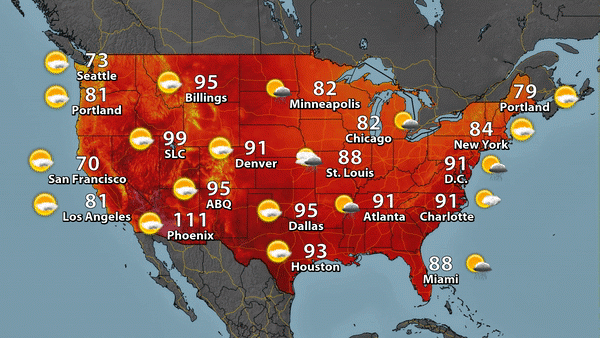
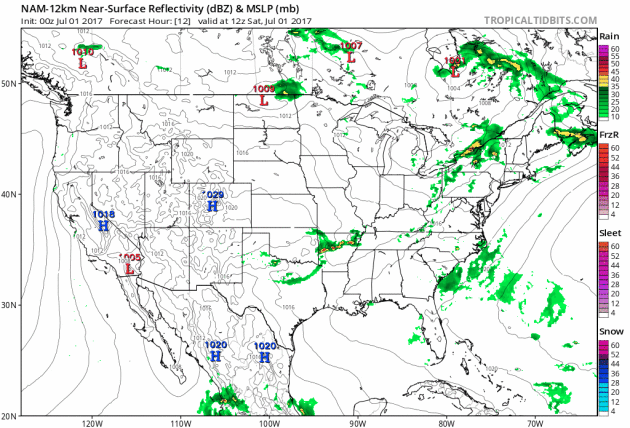
Photo credit: Tony Jostock.
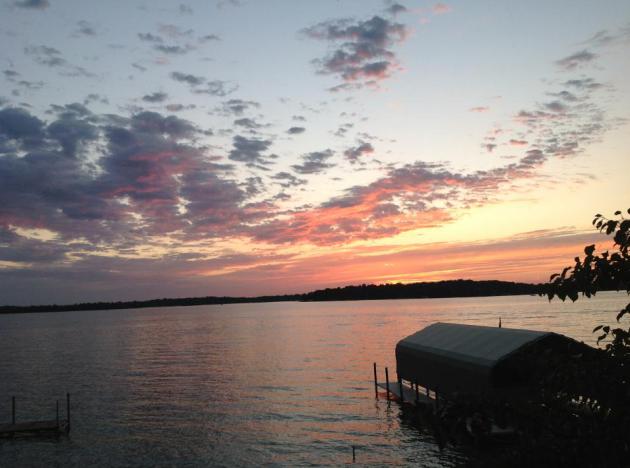
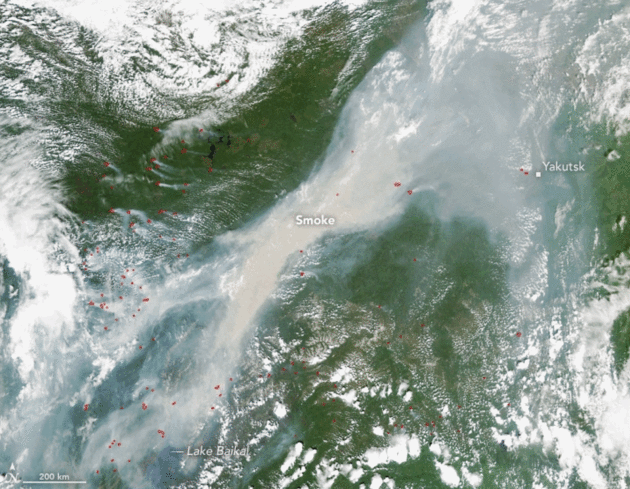
Photo credit: "A satellite image captured on June 23, 2017 shows the extent of wildfires burning across Siberia." Credit: NASA Earth Observatory.
Real-time wildfire map above: ESRI.com.
Siberian
wildfire season is off and running with multiple blazes searing the
boreal forest and tundra. It’s the latest example of the vast shifts
happening to the forests that cover Siberia and the rest of the northern
tier of the world as climate change alters the landscape.
Those forests are burning at a rate unheard of in at least 10,000 years
due largely to rising temperatures. They contain vast reserves of
carbon stored in trees and soil and when they burn, they send that
carbon into the atmosphere. That creates a dangerous cycle of more
severe wildfires and ever rising temperatures.Map credit: "GFS weather model analysis of maximum temperatures in the Middle East Thursday afternoon." (WeatherBell.com).
Graphic credit: "This false-color image shows ozone concentrations above Antarctica on Oct. 2, 2015." (Credits: NASA/Goddard Space Flight Center).
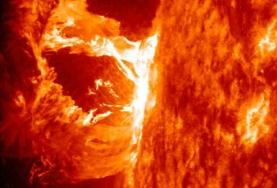
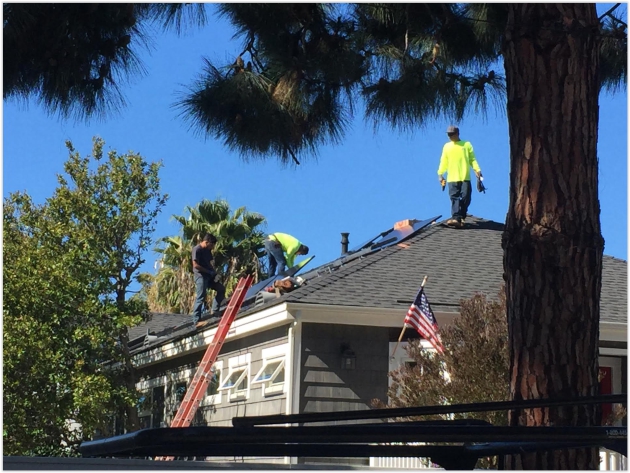
Image credit: SUMR.
A Bonkers Private "Jet" Brings Electric Flight to the Rich. A story at WIRED.com made me do a double-take: "If you’re just coming around to the idea of battery powered cars, prepare for the next onslaught, because the future of flight
is electric too. And just as with ground vehicles, nothing pushes along
new tech like some sex appeal. Tesla did that for cars, with sleek
looks and ludicrous acceleration. Now, Eviation Aircraft wants to do the same for the sky. At last week's Paris Air Show, the Israeli company unveiled a prototype electric light aircraft, a private jet without the jet engines..."
Photo credit: Eviation Aircraft Ltd.

Robocalypse Now? Central Bankers Argue Whether Automation Will Kill Jobs. The short answer appears to be - yes. Here's an excerpt from The New York Times: "...Generally speaking, economic growth is a good thing,” Ben S. Bernanke, former chairman of the Federal Reserve,
said at the forum. “But, as recent political developments have brought
home, growth is not always enough.” In the past, technical advances
caused temporary disruptions but ultimately improved living standards,
creating new categories of employment along the way. Farm machinery
displaced farmworkers but eventually they found better paying jobs, and
today their great-grandchildren may design video games. But artificial
intelligence threatens broad categories of jobs previously seen as safe
from automation, such as legal assistants, corporate auditors and
investment managers. Large groups of people could become obsolete,
suffering the same fate as plow horses after the invention of the
tractor..."
Photo credit: "Employees
of the German online retailer Zalando preparing customer orders for
shipping in Erfurt, Germany. Zalando has invested heavily in hubs like
the one in Erfurt and increased automation." Phil Hatcher-Moore for The New York Times.

Humans vs. Robots: How to Thrive in an Automated Workplace. Robots and AI will replace repetitive jobs, but new jobs, new opportunities will arise as a result, argues the author at Fortune: "Are robots going to take our jobs? Will artificial intelligence make it even easier? How will automation really
affect the global workforce and economy?As these technologies have
developed with increasing speed, it's not unnatural—no pun intended—to
wonder about their impact on the lives of regular people (not to mention
the companies they work for). Will automation free our time for
leisurely pursuits? Or will we get even busier? And if we're so good at
creating technology that does the work for us, will society create new support mechanisms to address that reality?..."
Steve Jobs is a Rorschach Test: To Be a Good Leader, You Don't Have To Be a Jerk. Food for thought from Quartz: "...When asked about Jobs’ biggest shortcomings, his biographer Walter Isaacson offered:
“He could’ve been kinder.” It wouldn’t have cost him anything. He
might’ve even gained some loyalty from it. And it’s not a coincidence
that the Jobs who came back to Apple in 1997 was kinder—I’ve heard this
over and over from his close collaborators. He evolved. Although he
still wasn’t warm and fuzzy, he was less cruel. Mistake 2: confusing
outward prickliness with inner selfishness. I’ve found that whether
you’re a giver or a taker
on the inside is completely separate from how agreeable you are on the
outside. There’s little question that Jobs was disagreeable: He was critical and skeptical...."
Photo credit: "Pyrosomes aboard a National Oceanic and Atmospheric Administration research vessel in the Pacific Ocean off the coast of Oregon in May." (Hilarie Sorensen/NOAA Fisheries via Reuters).

IBM's Watson Will Analyze Wimbledon to Suggest the Best Matches. Soon we'll all be working for Watson. Engadget has more detail: "IBM's Watson can apparently do everything. From manufacturing and medical treatment planning to portrait drawing and filing your taxes, there seems to be no limit to what the Jeopardy-winning AI can do. And next week, Watson will be offering its services to the Wimbledon tennis tournament. Those attending the event will be able to access a Watson-driven digital assistant named Fred via a mobile app. Fred will be able to help them navigate the courts, find food stands and vendors as well as figure out who is playing at any given time..."
File photo credit: IBM and Fortune.
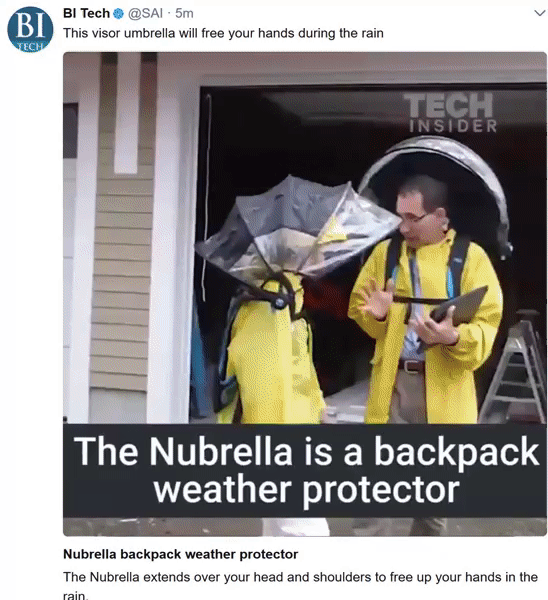
“How far you go in life depends on your being tender with the young, compassionate with the aged, sympathetic with the striving and tolerant of the weak and strong. Because someday in life you will have been all of these.” – George Washington Carver
TODAY: Mild sun much of the day. PM T-storm up north. Winds: NW 7-12. High: 77
SATURDAY NIGHT: Risk of a shower or T-shower. Low: 61
SUNDAY: Plenty of sun, nice for a holiday. Winds: N 5-10. High: near 80
MONDAY: Plenty of sun, lake-worthy. Winds: E 5-10. Wake-up: 61. High: 82
4TH OF JULY: Partly sunny, stray storm SW Minnesota. Winds: SE 5-10. Wake-up: 65. High: 85
WEDNESDAY: Hazy sun, uncomfortably sticky. Winds: SW 5-10. Wake-up: 69. High: 88
THURSDAY: Hot sun, definitely feels like July. Winds: SE 8-13. Wake-up: 72. High: 92
FRIDAY: Early T-storm, then partial clearing. Winds: NE 5-10. Wake-up: 69. High: 87
Climate Stories...
Graphic credit: "Produced by Carbon Brief using data from RSS."
Heat Deaths in U.S. Cities Could Jump 10-Fold if Climate Change Isn't Slowed. Here's an excerpt from Healthday News and Bismarck Tribune: "America's exit from the Paris climate change agreement will lead to more punishing summer heat waves and thousands of additional heat-related deaths each year in major U.S. cities, a new report claims. Conducted by the Natural Resources Defense Council (NRDC), the report projected that all 51 of the country's urban areas with more than 1 million people will experience more dangerously hot summer days both in the middle and late parts of this century. In 45 of the largest cities, excess deaths on dangerously hot days could increase 10-fold, from an average of about 1,360 each summer between 1975 and 2010 to 13,860 by the mid-2040s, the report concluded..."
Photo credit: Tom Wang, Bismarck Tribune.
Photo credit: "Fire and smoke is seen on the IC8 motorway during a forest fire near Pedrogao Grande, in central Portugal on June 18, 2017." Credit: REUTERS/Miguel Vidal.
Photo credit: "Kit Harington – AKA Jon Snow – has described ‘terrifying’ evidence of global warming." Photograph: HBO/2015 Home Box Office.
Nuclear Power and Climate Change. Here's a response to a recent Op-Ed in the New York Times from Carol Browner, former administrator of the EPA, and a member of Nuclear Matters, a national coalition: "...Trying to fight climate change without our existing nuclear fleet is akin to trying to fight a fire with a steadily decreasing supply of water: It just won't work. We need to recognize this and take steps to preserve the critical carbon-free power we get from our nuclear plants..."
Photo credit: "The Three Mile Island nuclear power plant in Middletown, Pa. Exelon has said it will shut down the last reactor there by 2019 unless it receives financial assistance." Jonathan Ernst/Reuters.
Climate Change in the U.S. Could the Rich and Hurt the Poor. The Washington Post explains the implications of a warmer, wetter, more volatile climate: "...Researchers have long warned that unmitigated climate change could cause severe financial hardship to the United States in coming decades. But a new study published Thursday in the journal Science details how global warming could disproportionately affect poor areas of the country, contributing to widening economic inequality among Americans. “The poor regions will get poorer and the richer regions will benefit,” said study co-author Solomon Hsiang, a professor of public policy at the University of California at Berkeley. “What we’re seeing here is that climate change will have a very large impact on the quality of life and economic opportunity in the coming decades for ourselves and our children...”
What Can We Learn From Dystopian Fiction About Climate Change? Hyperallergic.com has an interesting post.
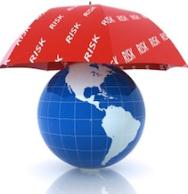
Map credit: New York Times. Kopp, Hsiang, et al. / Science.
Climate Change is Already Hitting Home. It's not something that's 30 years down the road - we're already seeing symptoms of a warmer, wetter world, including more extreme rainfall events, worldwide. Here's an excerpt of a post from Popular Science and Peter Sinclair at Climate Denial Crock of the Week: "...According to a recent Yale survey, 7 in 10 Americans believe global warming is real and happening. And 6 in 10 believe it is affecting U.S. weather. But only 1 in 3 say they’ve personally felt its effects. That disconnect stuck with Heidi Cullen. “You’re never going to think of it as an issue that’s urgent unless you recognize the fact that you’re already being impacted,” says Cullen, chief scientist for the nonprofit Climate Central. Now in its ninth year, Climate Central is part research hub and part journalism outfit—an unusual hybrid that tries to connect climate change to people’s lives. The organization’s latest project, World Weather Attribution, identifies direct links between extreme weather events and global warming. Cullen and her team created the program after realizing that while the tools for attributing such events have evolved, the results were coming out too late to influence the conversation..."
Researchers published a landmark study in Science
on Thursday that analyzes what climate change will mean for the
economies of all 3,144 counties in the U.S. The analysis is the first of
its kind, but the results show what’s becoming a common refrain when it
comes to the impact of climate change: Rising temperatures will cause
the poorest to suffer the most, even in the wealthiest nation in the
world.
Union County is just one of a host of poor counties in the
South that will be hit disproportionately hard by the impacts of climate
change. In contrast, more wealthy counties in the northern third of the
country are likely to be insulated from the effects of climate change
and could even make economic gains because of new agricultural land
opening up and fewer deaths due to cold weather. The findings have broad
implications for county planning and the need for a strong, coordinated
response to address climate change at the national level.
Researchers published a landmark study in Science
on Thursday that analyzes what climate change will mean for the
economies of all 3,144 counties in the U.S. The analysis is the first of
its kind, but the results show what’s becoming a common refrain when it
comes to the impact of climate change: Rising temperatures will cause
the poorest to suffer the most, even in the wealthiest nation in the
world.
Union County is just one of a host of poor counties in the
South that will be hit disproportionately hard by the impacts of climate
change. In contrast, more wealthy counties in the northern third of the
country are likely to be insulated from the effects of climate change
and could even make economic gains because of new agricultural land
opening up and fewer deaths due to cold weather. The findings have broad
implications for county planning and the need for a strong, coordinated
response to address climate change at the national level.
A Giant Iceberg Is About to Break Off From Antarctica. Details at Fortune: "A
massive iceberg is “hours, days, or weeks” away from separating from
Antarctica’s Larsen C ice shelf, scientists based in the United Kingdom said Wednesday.
“When it calves, the Larsen C Ice Shelf will lose more than 10% of its
area to leave the ice front at its most retreated position ever
recorded," the scientists wrote. "This event will fundamentally change
the landscape of the Antarctic Peninsula." The iceberg that forms from
the predicted separation could end up being roughly the size of
Delaware, making it one of the largest icebergs
that scientists have ever observed. The event could trigger a collapse
of the entire Larsen C ice shelf, a catastrophe that could raise
worldwide sea levels by four inches, researchers estimate..."
Image credit: Project Midas. "Comparison
of speeds between Sentinel-1 image mosaics in early and late June 2017.
The early mosaic combines displacements on the inner shelf measured
between 6th and 12th June with similar ones on the outer shelf measured
between 3rd and 15th June. The recent mosaic combines inner shelf
displacements up to 24th June with outer shelf displacements only 3 days
later highlighting a significant acceleration over those three days."
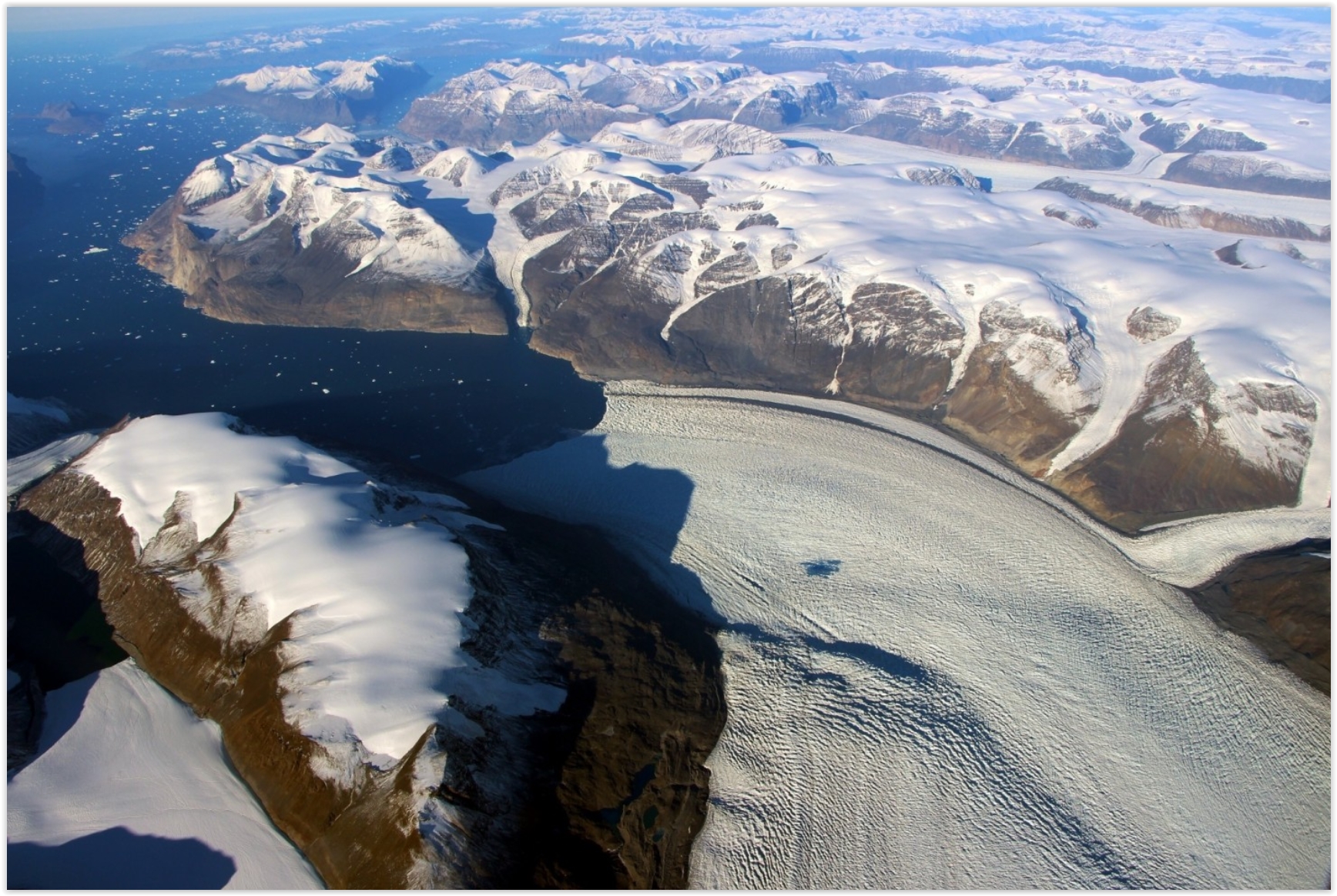
Climate Change is Not The Only Cause of Greenland Ice Melt. Blame Sunnier Days. My first reaction: what's causing the sunnier days? Here's an excerpt from Newsweek: "Greenland’s ice sheet is melting faster than expected, and this has been accelerating over the past two decades. It is now the biggest single contributor to global sea level rise, accounting for 25 percent of the total. But besides warming climes, there is another culprit for the melt: sunnier days in fair Greenland. A paper published June 28 in the journal Science Advances shows that cloud cover has decreased by 14 percent from 1994 to 2009, at an average of just under 1 percent per year. That may not sound like much, but for ice, it’s a big deal. The researchers show that for every 1 percent drop in cloud cover, the amount of ice melt has increased by 27 gigatons. That’s a vast amount of water, approximately equivalent to the domestic water supply of the United States..."
File photo credit: John Sonntag, NASA.
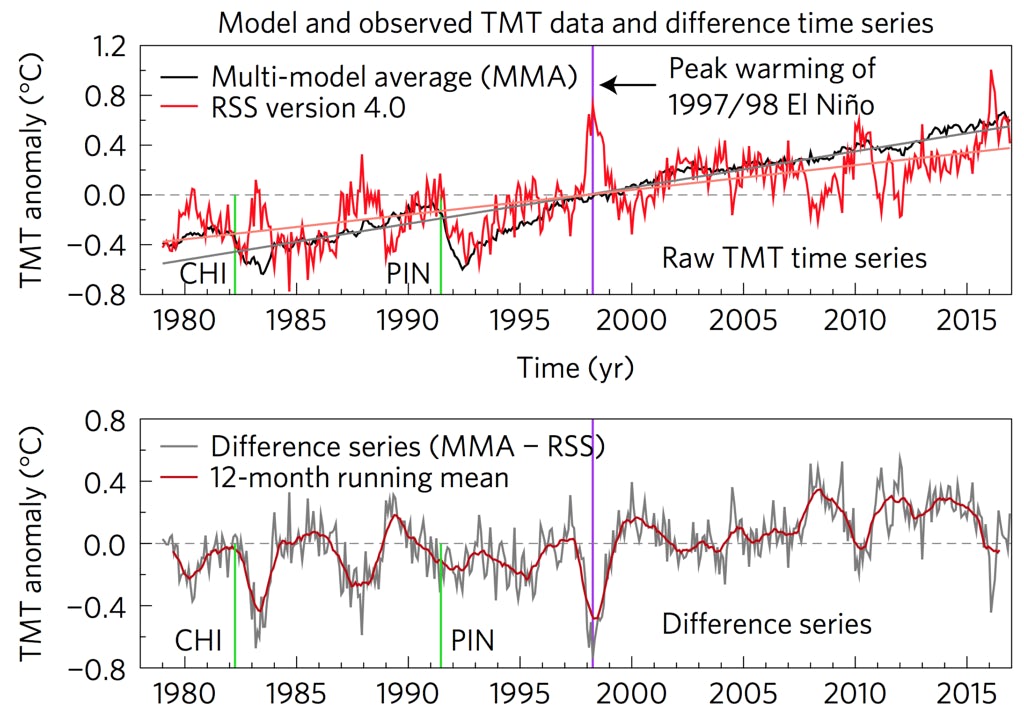
Climate Scientists Just Debunked Deniers' Favorite Argument. Here's a clip from an explainer at The Guardian: "...In a new study, a team climate scientists led by Ben Santer sought to answer this question. They effectively disproved Christy’s assertion that the discrepancy was due to models being too sensitive to the increased greenhouse effect. Instead, the main culprit seems to be incorrect inputs used in the climate model simulations. The issue is that climate model simulations are run using specific scenarios. These scenarios assume specific changes in factors that influence global temperature and climate changes (known as “forcings”), like rising levels of atmospheric greenhouse gases and changes in solar and volcanic activity. Climate models don’t make “predictions;” rather, they make “projections” of how temperatures and other climatological factors will change in response to those forcing input scenarios. There’s also a random component known as “internal variability” due to factors like unpredictable ocean cycles..."
Graphic credit: "Remote Sensing Systems estimate of the temperature of the middle troposphere compared to the CMIP5 multi-model average (top frame), and the difference between the two over time (bottom frame)." Illustration: Santer et al. (2017), Nature Geoscience.
Crossing an Ideological Divide. Full disclosure: EEN President and former Methodist minister Mitch Hescox is my co-author for the book "Caring for Creation": The Evangelical's Guide to Climate Change and a Healthy Environment." Here's an excerpt of an Op-Ed at The York Dispatch: "...So it was more than a tad refreshing to hear a local conservative weigh in this month in favor of acting on climate change. Mitchell Hescox, president of the York-based Evangelical Environmental Network, said in an essay he penned for the Dispatch that his organization is “part of a growing number of faith-based, bipartisan and conservative groups dedicated to caring for our children’s health by being good stewards of the earth.” He has no trouble reconciling science and religion: “Left unchecked, CO2 levels will continue to rise beyond the over 400 (parts per million) that God intended,” he writes. And he has no trouble reconciling science and political affiliation. Hescox calls on Christians of all political parties to be “good stewards of the earth...”
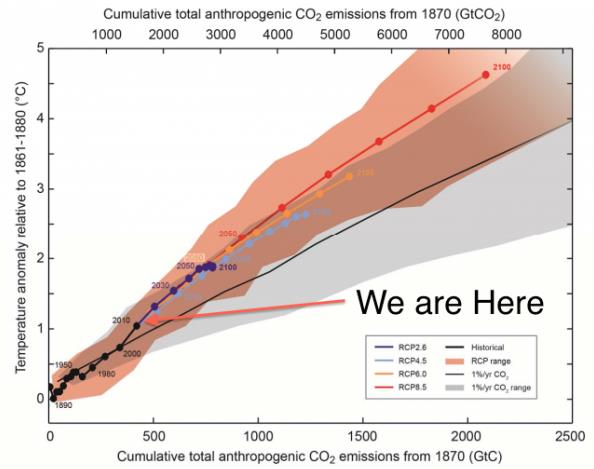
Three Years to Ward Off Potential "Climate Catastrophe"?
I realize the situation is urgent - we don't know what we don't know,
and tipping points are inevitable. I do get a little leary about some of
the more strident gloom and doom headlines though, some people just
shut down or avoid the topic when they see things like this. We don't
have much time, but whether it's 3 years or 15 years - I don't pretend
to know. Here's an excerpt from The Verge: "To
save world from the climate change apocalypse, we need to start cutting
greenhouse gas emissions by 2020, a group of scientists claims. We have
just three years to do this, or the planet will warm to levels that
kick off irreversible, catastrophic climate changes. To help avoid the
worst-case scenario, the scientists set six milestones to reduce carbon
emissions across sectors, including energy, transportation, and
infrastructure. The goals range from expanding renewables to reducing
deforestation, to issuing “green bonds” to finance climate-mitigation
efforts. This position paper appears in the journal Nature, just ahead of a meeting of world leaders in Hamburg, Germany..."
Pentagon, Trump Are At Odds on Climate Change - and Democrats Are Taking Advantage. The Miami Herald reports: "...Scientists estimate that rising sea levels threaten at least 128 U.S. military bases and installations, nine of which are major hubs for the U.S. Navy. Military installations on waterfront properties are facing hundreds of floods a year, and some could be mostly submerged by 2100, according to a report from the Union of Concerned Scientists. Military leaders have consistently warned that extreme weather patterns, drought and floods are aggravating social tensions, destabilizing regions and feeding the rise of extremist groups like al Qaida and the Islamic State. At his confirmation hearing, Secretary of Defense Jim Mattis called climate change a “driver of instability” that requires a “whole-of-government response” to address..."
Photo credit: "Army National Guard vehicles travel through floodwaters Aug. 14, 2016, on LA-442, west of Tickfaw, La., as rescue operations continue after heavy rains inundated the region." Max Becherer AP.
No comments:
Post a Comment